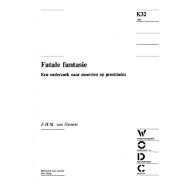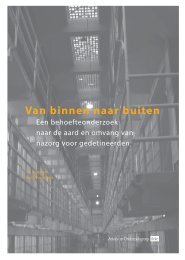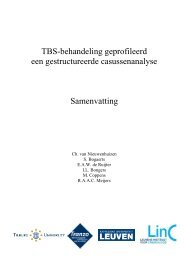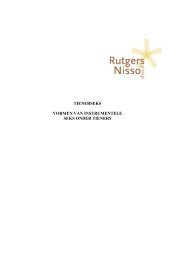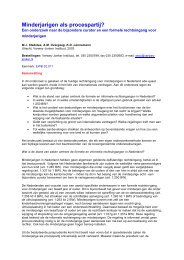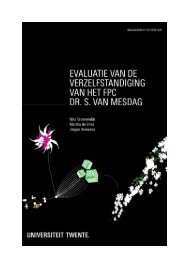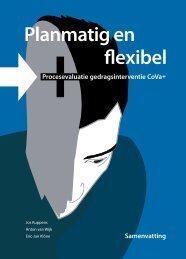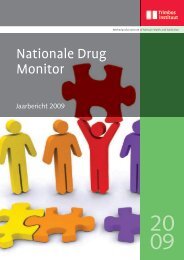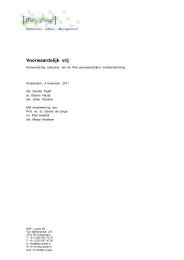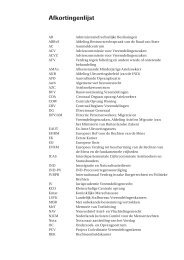Procesevaluatie observatieafdelingen Teylingereind - WODC
Procesevaluatie observatieafdelingen Teylingereind - WODC
Procesevaluatie observatieafdelingen Teylingereind - WODC
You also want an ePaper? Increase the reach of your titles
YUMPU automatically turns print PDFs into web optimized ePapers that Google loves.
these goals. The consequence of (a) and (b) is that it is unclear how their ‘best practice’ is or<br />
can be empirically validated.<br />
Based on the literature and statements made by the initiators, the researchers<br />
formulated 14 criteria or goals which would be useful for a more substantive process<br />
evaluation of the observation units. The criteria are: (1) multidisciplinary teamwork, (2)<br />
expertise from the behavioural sciences, (3) systematic work, (4) protocol compliance, (5)<br />
collaboration between the institutional partners in the field of juvenile delinquency, (6)<br />
feedback on outcomes and results, (7) satisfaction on the part of the users of the clinical<br />
reports, (8) registration of findings, (9) integration of research and clinical practice, (10)<br />
education and training of staff, (11) exchange of knowledge/expertise between the ForCA<br />
member organizations, (12) production of clinical reports, (13) timeliness of clinical reports<br />
and (14) processing speed. These criteria were classified under the four main goals formulated<br />
by ForCA for the improvement of the quality of the diagnosis and treatment of juvenile<br />
delinquents.<br />
Phase 2 focused on the current functioning of the observation units. From the opening of the<br />
unit on 1 May 2009 up to 15 October 2010 (closure of data collection), 62 male adolescents<br />
between the ages of 14 and 24 were placed in the ‘de Ven’ unit for a clinical report. From the<br />
opening of the 'de Gaag' unit on 18 August 2009 up to 19 March 2010, 15 male adolescents<br />
between the ages of 18 and 22 were placed in the unit for treatment or PIJ-prolongation<br />
advice. The latter unit has been temporarily closed since 19 March 2010 because no or few<br />
new clients were presented. Since the temporary closure of the ‘de Gaag’ unit to date (15<br />
October 2010) four individuals have been placed in the ‘de Ven’ unit although they required<br />
treatment advice.<br />
The selection and placement of adolescents differs depending on the unit involved.<br />
The individuals in the ‘de Ven’ unit are placed there by order of the examining magistrate.<br />
The Netherlands Institute for Forensic Psychiatry and Psychology (NIFP) fulfils the role of '<br />
placement assessor'. The most commonly mentioned criterion for placement in the ‘de Ven’<br />
unit is ‘Diminished compliance, communicativeness or motivation of the young person'. In<br />
most cases the criterion means that the individual did not cooperate with an earlier diagnostic<br />
assessment, has stated that he is going to refuse to cooperate or is expected to do so. The<br />
adolescents in the unit for treatment and PIJ-prolongation advice (‘de Gaag’) are placed there<br />
by the Individual Cases Department (IJZ) at the Ministry of Security and Justice. Although in<br />
most cases it is the director of a young offenders' institution who submits the request, the IJZ<br />
15



